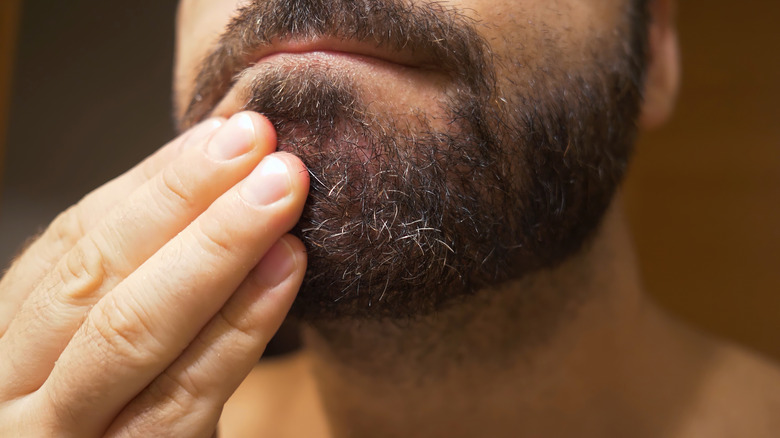
Dandruff isn’t something that’s solely reserved for the hair on the top of our heads. Rather, it can be found on beards too (via Byrdie) — as much as they can offer some health benefits, they might come with a lovely helping of dandruff. Beard hygiene has become something of a conversation topic among men in recent years, but beard dandruff? It’s not something that tends to come up all too often — after all, it’s not exactly the most exciting subject in the world and, let’s be real — who really wants to discuss it with their friends on a Friday night?
But, like it or not, bear dandruff exists. There’s no point brushing it under the carpet, so we might as well address the issue once and for all. What causes it, and how can you treat it? To save the potential awkwardness of asking about it, we’ll have a look at the answers here. Yup, just in case you’ve ever been wondering, here’s what it means when you get dandruff in your beard.
It's caused by a fungus but is easily treatable

Per Byrdie, beard dandruff is the colloquial term for seborrheic dermatitis, a skin condition that affects both the scalp and face, and usually includes white flakes in the beard and red skin on the skin underneath. According to dermatologist Dr. Dendy Engelman, dandruff is most often caused by the fungus Malassezia globosa — it breaks down oils, leaving behind oleic acid, which irritates the skin. However, it can also be caused by the buildup of skin cells — these are the two main causes.
Treating beard dandruff isn’t difficult, but you should bear in mind that you could be waiting a week or two before you see the results you’re after. Generally, a simple routine of exfoliating, washing, and moisturizing should help you see the desired effects, as long as you undertake it on a fairly regular basis. According to Healthline, a specialized beard brush and dandruff shampoo are worth investing in for best results.
Source: Read Full Article